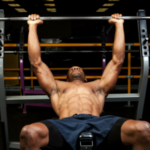Recent Posts
Skiing Vs Snowboarding: Differences
25th July 2023Best Tips For Fishing: Beginners and Intermediate Fishers
25th July 2023Cycling Safety Measures and Best Practices
16th July 2023Benefits Of Cycling For Physical and Mental Health
15th July 2023HOW TO ACTIVATE THE MECHANISMS OF MUSCLE MASS GAIN

When you do bodybuilding, in the room or at home, it is mainly or partly to gain muscle mass. Even if you’re going to work out to improve your strength, muscular endurance, or technique on some weightlifting or vigorous workouts, you’re certainly happy that your muscles are growing in parallel. It is always admirable for a bodybuilder to have more significant muscle mass.
Focus on strength to increase muscle mass
Some coaches and these are also my points of view, focus on strength training with progressive overload to develop the muscle mass of their athletes. They recommend doing basic weight training exercises with heavy loads and few repetitions. They are right the s because many people do not understand the importance of increasing their strength to build muscle.
Ronnie Colman once said, “Everyone wants to become a bodybuilder, but no one wants to lift heavy weights.” Guys like Arnold Schwarzenegger and Ronnie Colman were powerlifters before becoming bodybuilders and Mr. Olympia. They do not just eat steaks and bananas to get their physique strength was an integral part of their training.
All that to say that it is easy to get good muscular congestion, but that to increase its muscular strength it requires high mental strength, perseverance, and consistency. And that’s why so many people avoid strength training and therefore miss out on the main element to gain muscle mass. So do not make this mistake because to have bigger muscles, you must continuously develop your strength through the progressive overload, to increase the tension on your muscles and force them to adapt and grow.
That’s the basis, more displaced weight is synonymous with more muscle and if you understand that you’re getting off to a great start. But strength alone is not enough to optimize muscle mass; however, lifting heavy weights is not enough to maximize the development of your muscle mass.
Powerlifters lift heavier weights than bodybuilders, so they put their muscles to more significant stress and yet bodybuilders have bigger muscles. So, if tension were the only way to make muscles grow, strength athletes would have more muscle mass than bodybuilders.
And we cannot say that it is because of steroids or other forms of doping, because the natural bodybuilders still have a musculature more imposing than the natural powerlifters.
And when powerlifters want to, develop their muscle mass, they adopt the techniques of bodybuilders by adding more repetitions and decreasing rest times between sets on their exercise.
Given all these aspects, you understand that there is not only one way to muscle and will now present the main mechanisms that will allow you to maximize your muscle mass. There are two main mechanisms to increase the size of your muscles:
• Mechanical tension
• Metabolic stress
There is the third mechanism, which is the muscular damage. Muscle damage creates a temporary inflammatory reaction within your muscles and releases the signals needed to activate muscle growth.
But we will not go into the details of muscle damage anymore, because they are the result of the other two mechanisms that “shock” your body when you do intense and varied bodybuilding workouts.
1. Mechanical tension
The mechanical tension is obtained by using a large load and polyarticular exercises for a given time. When you lift heavy weights, and you feel that your muscles are about to fall out of your bones, that’s the mechanical tension!
Polyarticular exercises such as the squat, deadlift, bench press, can lift larger loads with higher amplitude and your load will be heavy, and your movement will last a long time, and the mechanical tension will be significant.
When you put pressure on your muscles by stretching them passively (without contraction), the mechanical strength is called passive elastic tension. If you put a strain on your muscles by shortening them as much as possible through an isometric contraction, the tension is called active tension.
When you lift heavy weights with a full range of motion, your muscles are subjected to both passive and active tension because they are stretched while being active. Research shows that dynamic movements are superior to stretching or isometric movements to develop muscle mass.
The tension alone will not be enough to ensure maximum muscle growth; it requires a mechanical tension and a full range of motion. So the more you get stronger and the more you will create mechanical tension during your exercises, and this will promote better muscle hypertrophy.
So, you better understand why the basis for increasing your muscle mass is to lift heavy loads through a full range of motion. In addition to creating significant tension in your muscles, these exercises can also raise your testosterone, which is an anabolic hormone essential for the development of your muscle mass.
2. Metabolic stress
The period your muscles are under tension also plays a vital role in muscle hypertrophy. When you increase the time under tension, your muscles are filled with blood and trigger specific signals favorable to the development of your muscle mass.
Think about this feeling of swollen blood muscles and that burning sensation, and these are the two mechanisms that create metabolic stress. Metabolic stress is caused by several factors, such as:
• Occlusion of veins due to continuous muscle contractions that prevent blood from escaping
• Hypoxia or the lack of oxygen in the muscle because of the blood trapped in your muscles
• Lactate accumulation and significant anabolic hormonal stimulation such as growth hormone
• The swelling of the cells or “pump” muscle also caused by the accumulation of blood in your muscles
All of these factors help develop muscle mass in synergy with tension and progressive overload. Vary workouts to maximize muscle massIf your goal is to gain muscle mass, working only your strength or muscle congestion will not be enough to have maximum gains.
You must, therefore, make sure to vary your exercises and the intensity of your training and develop your strength with low, medium, and high repetition ranges. Prevent your body from adapting; you need to periodize your workouts by regularly modifying your exercises and your number of repetitions.
How to organize your workouts to activate all the mechanisms of muscle mass gain
Here is an example that you can use to organize your weight training and maximize your muscle mass. Begin your sessions with compound exercises and heavy loads for 3 to 5 sets of 3 to 6 repetitions. Like this, you will develop your strength while creating a mechanical tension in your muscle fibers.
You must put a maximum of energy and concentration on this training part, because as you have understood, increasing your strength is the most important and the most difficult. Following this, you can perform 2 to 4 exercises with less heavy loads in a range of 6 to 10 repetitions.
This range of repetitions ensures both mechanical tension and metabolic stress and will, therefore, also create muscle damage that you need to ensure muscle hypertrophy.
In this repetition, the range gives yourself 1 minute of rest between each set. At the end of your session, you may work in a variety of 12 to 20 repetitions to improve your lactic threshold and increase metabolic stress.
In this range of repetitions, you will also empty your glycogen reserves, and your body will adapt by increasing your reserves, which will give you bigger muscles.
You can do these end-of-session exercises in the form of a circuit with very little rest, to raise your metabolism to the maximum and burn your fat for several tens of hours after your training.
Recent Posts
Techniques and Best Practices for Anglers
21st November 2023Hiking Vs Trekking: Differences and Similarities
12th August 2023How to Lose Weight by Cycling
12th August 2023How to Choose Skis for Beginners
12th August 2023Related Articles
Types of Hiking Trails: Options to Explore
Hiking captures the hearts of people across ages and fitness levels as...
By Fortunatus Adunola25th July 2023Benefits Of Cycling For Physical and Mental Health
Cycling, a broadly embraced hobby, brings forth manifold blessings for each physical...
By Fortunatus Adunola15th July 20235 proven strategies to teach your child skiing.
It’s done, your holidays in the mountains are reserved! To you, the...
By O. Johnson Taiwo11th June 2019Five Activities To Do With Children
Going skiing with kids can often be stressful for parents. But do...
By O. Johnson Taiwo11th June 2019














